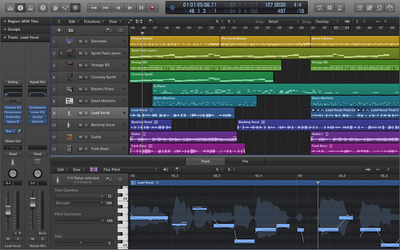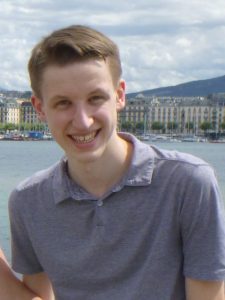
July 29, 2020, by Prof Meghan Gray
Physics and Music
One of the great benefits of studying at university is realising how so many subjects are interconnected in sometimes surprising ways. Many of our staff and students are interested in exploring e.g. connections between physics and music, or between physics and art.
Our physics undergraduates can take up to 10 credits per semester outside the School (with permission). In this guest post Alex Tomlinson (MSci Physics with Theoretical Physics) tells of his experience of taking a module in the Department of Music during his second year of studies.
 Throughout school music was one of my favourite subjects, taking it all the way to A-Level. I even briefly considered taking it at university, but my enthusiasm towards physics won out. Nonetheless I kept music as a hobbyist pursuit, and so when I discovered that a small number of credits could be taken with other departments, I looked into taking a music module.
Throughout school music was one of my favourite subjects, taking it all the way to A-Level. I even briefly considered taking it at university, but my enthusiasm towards physics won out. Nonetheless I kept music as a hobbyist pursuit, and so when I discovered that a small number of credits could be taken with other departments, I looked into taking a music module.
I made use of the many resources offered by the university that one can use to learn about the process of taking a module from outside your department. In theory you can ask to take any module (providing you meet any prerequisites), however I felt that it would be appropriate to pick one with a link to physics. Not to mention that I believe the interface between physics and music is a particularly exciting area of study. After much deliberation I picked a module called ‘Sound Design and Synthesis’, which focuses on using computer software to create a variety of sounds and virtual instruments.
There were a few administrative hurdles to get past, the primary one being permission from both the physics department and music department. I am grateful that this was a painless process, as both my physics tutor and the convenor for the module were very helpful and supportive. A caveat I had not considered was that the module had a very limited number of students it took on (due to the capacity of the digital music studio), which meant I was not guaranteed to get a place. This is contrasting to physics modules, which tend to not be oversubscribed as they are usually lecture based. This was not an issue however, since when I applied for all my modules I could put backup physics modules, which I would have still been happy taking. I was delighted to learn that I had got on to the music module and shortly after started preparing for it.
The software in the digital music studio, Logic Pro, was something I knew of but had not used before (although I had used similar programs). Since the module was to start in Spring, I used some of the free time I had in Autumn semester to familiarise myself with Logic, utilising resources both online and in the library on campus. I was also allowed access to the studio, and since the best way to learn is to practice, I spent many evenings applying what I had learnt.

Logic Pro software credit: by Source (WP:NFCC#4), Fair use, https://en.wikipedia.org/w/index.php?curid=44339147
One of the first things I noted upon starting the module was how different it was to anything I had encountered in my physics studies. Whereas for physics you would usually have 50-minute lectures to full lecture theatres, Sound Design and Synthesis involved a weekly 3-hour workshop, in a group no larger than five. The assessment process was also new to me, as the module was entirely assessed in the term with three large pieces of coursework. Whilst physics modules do have a variety of assessment methods, the ones I had taken up to this point were mostly exam based. These differences provided refreshing variety to my Spring semester, and I found myself challenged in new ways.
The content of the module itself was something I particularly loved, with the connection between physics and music being highlighted often. There were a few times I could offer additional insight to the underlying maths involved with the sound design. One moment that particularly stood out, was when in one session we recorded the reverb (how sound waves reflect off walls and surfaces) of a room in the music department. This process involves emitting a known sound, such as a pure tone sweeping through a range of frequencies, and then recording that sound as it reverberates in the room. Software can be used to extract just the reverb effect of the room, i.e. without the sound. This can then be added to computer generated sounds to give the impression they are played in the room itself. During this process, a tool in the software called “deconvolution” is used, which was a term none of us were familiar with. That following week, in a physics lecture for the “Wave Phenomena” module, we covered the convolution theorem, which I then realised was the exact physics that the software had been using! This connection made between the two modules was nothing I could have planned for, so was a delightful revelation.
Overall, the entire experience of taking a module outside of the physics department was very enjoyable. I would encourage any students potentially interested in widening their degree to investigate doing so. Only a limited number of credits can be used (otherwise it wouldn’t be a physics degree!), and I would recommend double checking any prerequisites. It would also be worth making sure that the workload would be manageable, but otherwise it is a very rewarding experience. What I gained from the module I have already been able explore further in my own time, and I look forward to continuing this in the future.
No comments yet, fill out a comment to be the first

Leave a Reply